

BV 141B
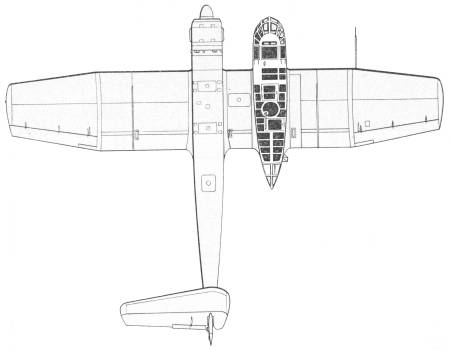
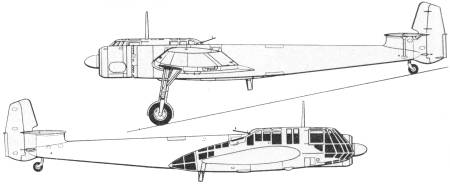
The BV 141 was probably one of the most
unusual
aircraft to take wing during World War II. In 1937 the RLM had issued
a
specification to Arado and Focke-Wulf calling for a short range
reconnaissance aircraft capable of fulfilling the light bomber, low
level attack and smokescreen laying roles in an emergency. The RLM
favored the Arado proposal which became the totally unsuccessful Ar
198. Blohm & Voss (then known as Hamburger Flugzeugbau) was not
invited to tender a proposal but their chief designer Dr. Vogt had
some
then radical ideas of how to fulfill the RLM's specification and
submitted a private venture proposal, that being the asymmetrical BV
141. The RLM showed little interest in the design, however, Vogt
convinced Ernst Udet, newly appointed chief of the development section
of the RLM, to test fly the design which first flew on February 25,
1938. After his flight an official contract was placed for three
machines.
The RLM was not happy with the fuselage section and for the next aircraft it was completely redesigned, resembling the crew portion of the Fw 189. Hydraulic failure on the second machine caused it to be heavily damaged in a landing accident so the third aircraft ended up participating in the flight trials and was considered a production prototype. In order to improve its directional stability the fuselage was lengthened and the wingspan was increased. To improve ground handling the wheel track was widened as well. In spite of the RLM's misgivings they were forced to admit that despite its unorthodox appearance the aircraft possessed extremely docile handling characteristics and fully met the original specification. An order was placed for five preproduction aircraft, The BV 141A-01 to 05. The first of these crashed again due to hydraulic problems. The other four aircraft were completed on schedule and completed the official test program in January of 1940. The Test pilots were generally favorable in their reports however the Luftwaffe's high command displayed little enthusiasm for the "oddity" and in April of 1940 persuaded the RLM to cancel its plans for large scale production.
The high command's lack of enthusiasm was based on its unorthodox appearance and in searching for a valid technical reason for rejection of the machine decided it was marginally under powered. Dr. Vogt had foreseen the possibility that more power would be needed and as early as 1939 had begun a redesign to take they more powerful BMW 801 radial engine. Designated the BV 141B, the final mock-up was inspected and approved by the RLM in February of 1940. Less than a year later the first of five pre-production aircraft flew for the first time. Blohm and Voss had a firm contract for five aircraft but had taken options on a further five pre-production machines and ten production variants.
The BV 141B did not share the pleasant handling characteristics of its predecessor and major modifications were required in many areas. Completion of the remaining four aircraft was slowed pending the outcome of modifications to the first aircraft. The BV 141B also featured an asymmetrical tail plane which had been first tested on one of the A series aircraft. This was changed to improve the rear gunners range of fire. The first B series aircraft (the V9)was delivered to the Luftwaffe for trials in May of 1941 followed by the V10 a month later. Constant minor failures troubled the evaluation program and when the forth prototype was delivered for armament trials it was discovered that the gun ports were too short and the cockpit was filled with cordite fumes when the guns were fired.
Problems continued to plague the test program and as a result the fifth and last of the prototype, the V13 wasn't delivered until May of 1943. In the Autumn of 1941 the V10, was delivered to a squadron for trials under service conditions instructions were issued that sufficient BV 141's were to be delivered to form at least one operational squadron on the Eastern front. These plans were canceled in the Spring of 1942 by the General Staff as the Fw 189 was fulfilling the tasks for which the BV 141 had been designed. That, the problems encountered during the test program, the fact that Blohm and Voss's factory space was needed for Fw 200 production following a bombing raid and the demand for BMW engines for the Do 217 and Fw 190 production resulted in the RLM not taking the option on addition aircraft and as a result the BV 141 never saw squadron service.
The Kit
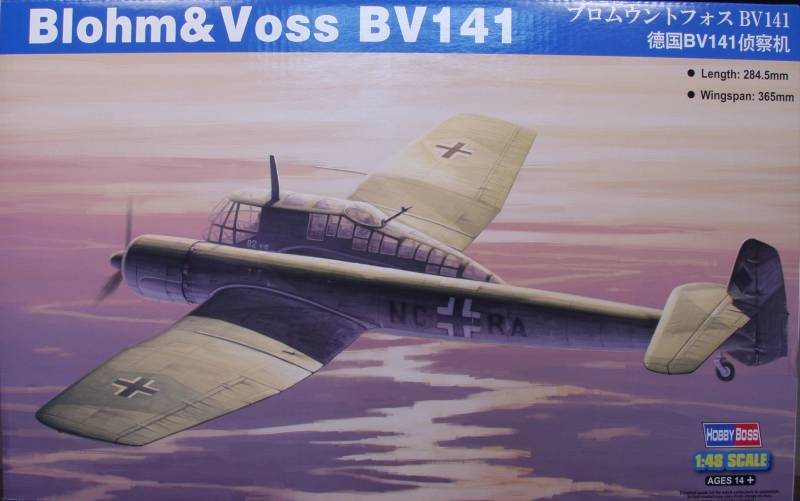
The HobbyBoss kit comes in an average size tray type top open box with reasonably nice artwork on the top. The box is actually a tad small as the the longer sprues just barely fit. Inside the box the kit is presented on three sprues in a medium gray color. Each is packed in its own plastic bag. For the clear parts each sprue is individually bagged and inside the bag it is wrapped in foam, so far I give them high marks for packaging so lets take a look.
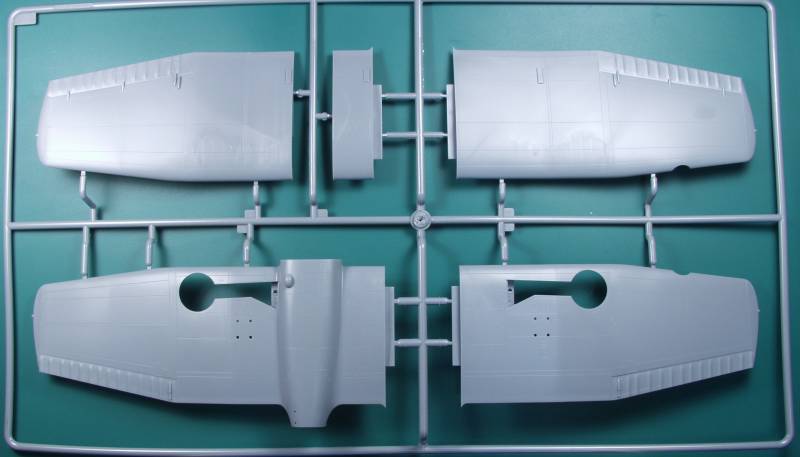
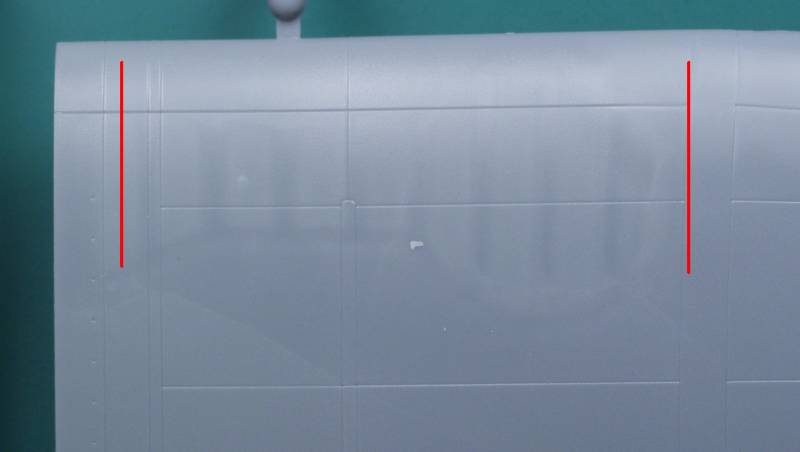
The next photo shows the fabric control surfaces, a
tad heavy but should work for most.
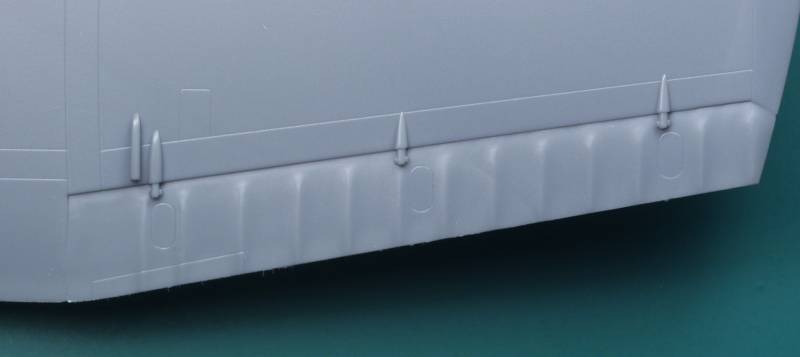
The cockpit and crew area seem well appointed and should please most, much of which is on the next sprue.
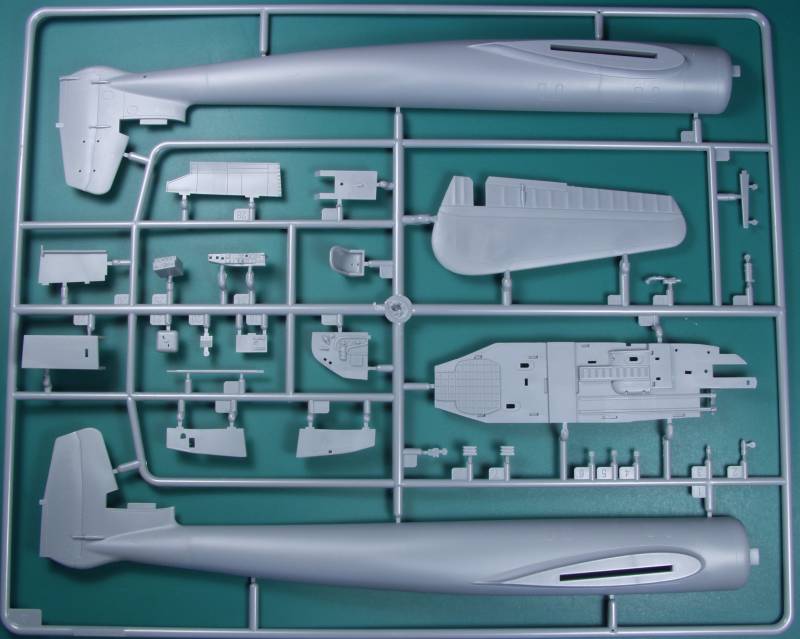
The level of interior detail can be seen in this copy from the instructions
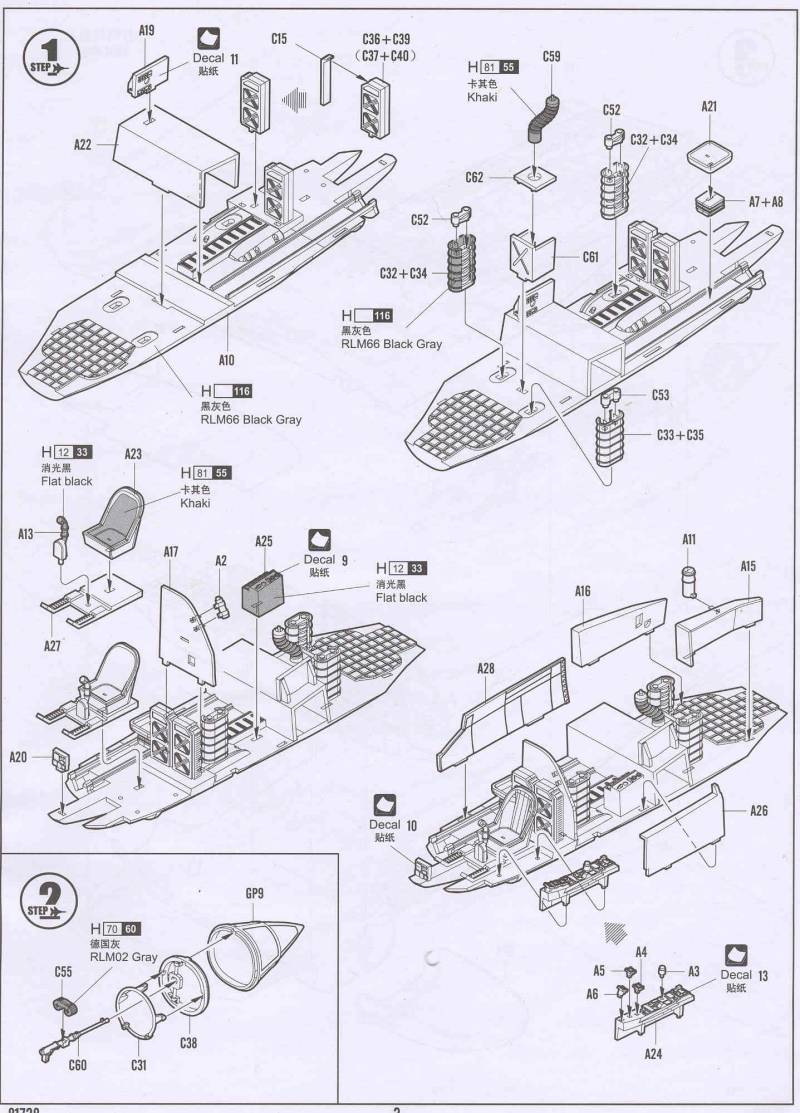
More interior parts, landing gear, engine and cowling
and propeller. Of note the propeller is molded incorrectly as it should
be pitched to turn in the opposite direction. My own personal opinion
the engine and fan look a little undersized as well but like most of
these engines with a cooling fan not much will be seen of the engine
anyway. The wheels are one piece moldings and are not weighted.
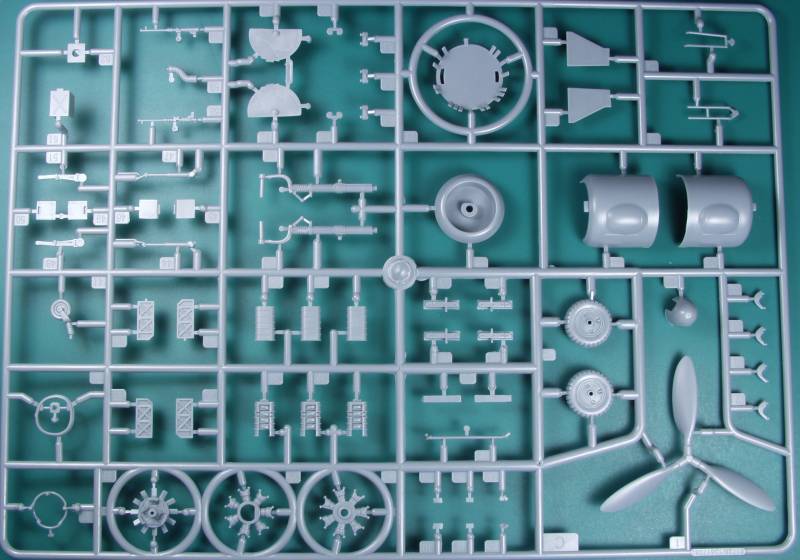
The clear parts would make or break a kit like this and HobbyBoss seems to have scored on this point. The clear parts are thin but not to the point of being fragile and are optically clear. The frame lines are well defined and the areas to be painted are frosted. Hatches in the upper part of the cabin are molded separately so they can be positioned in the open position. The instrument panel is also molded in clear.
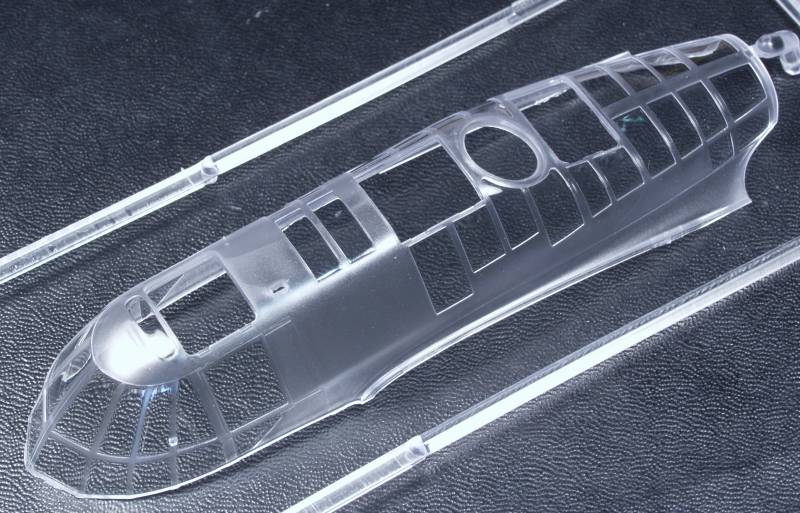
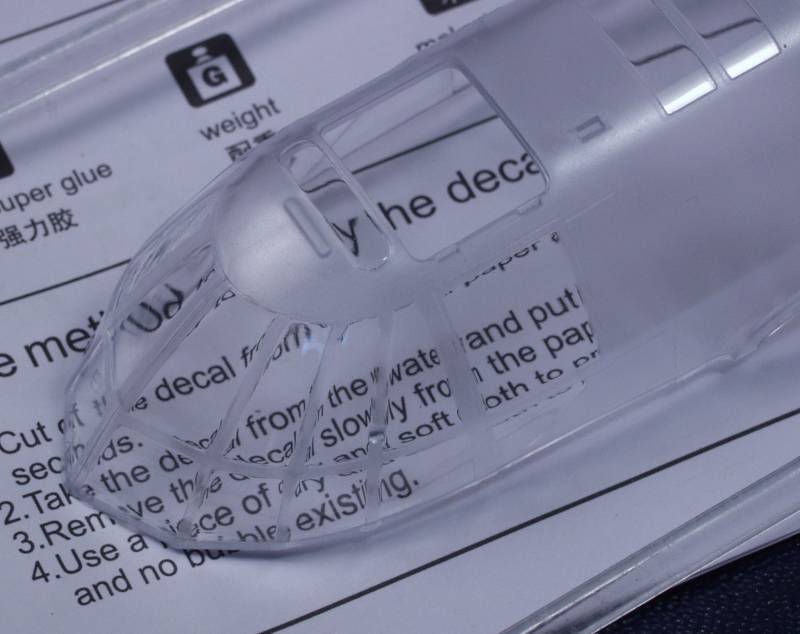
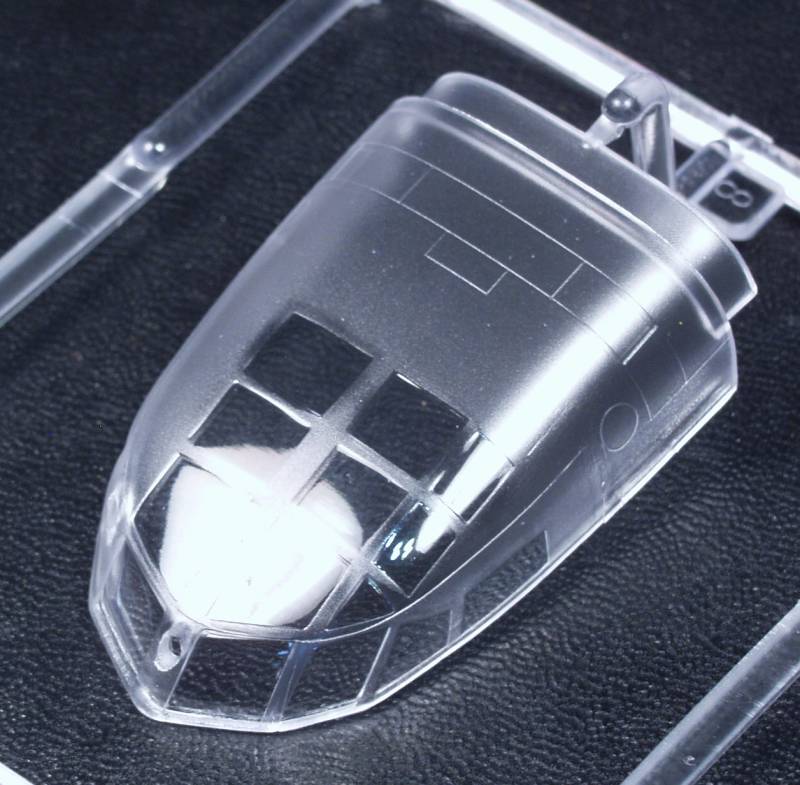
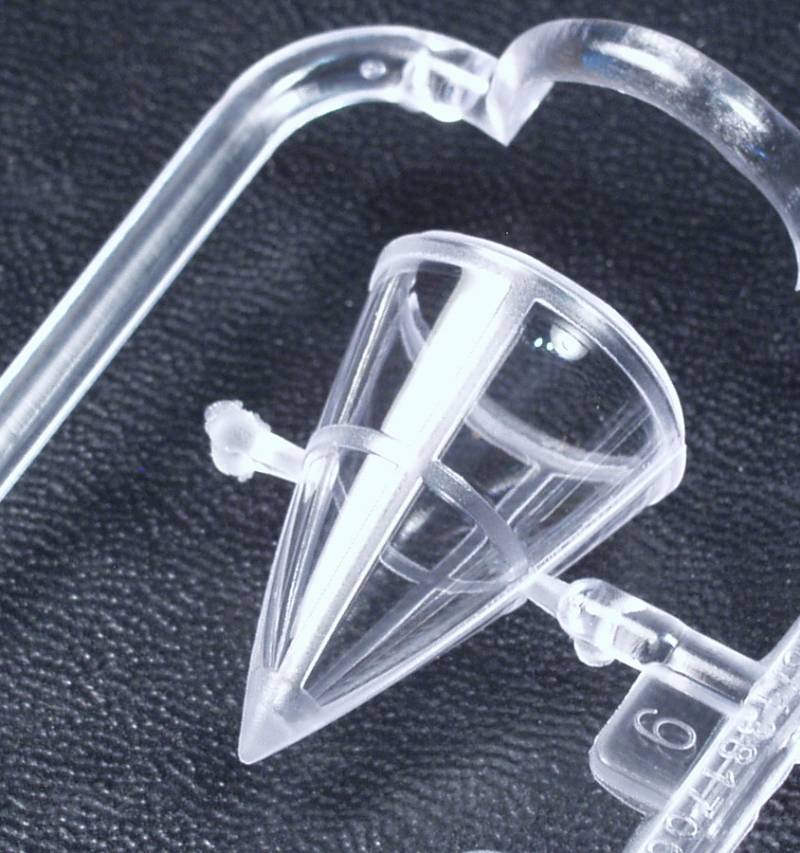
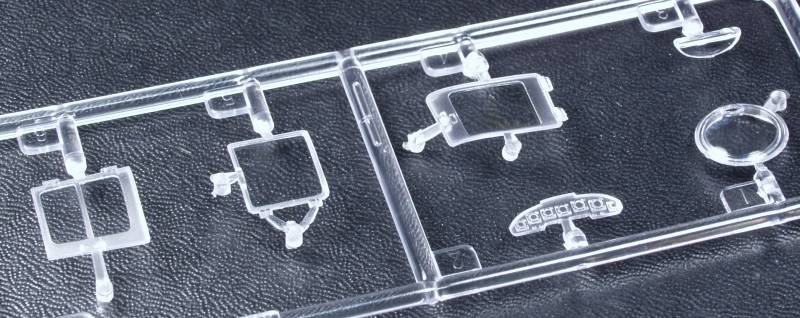
The decal sheet provides markings for two aircraft,
one in RLM 02 over RLM 65 and one in the normal splinter scheme over
RLM 65. The decals look thin and in register but has a bit more excess
clear film than I would like to see and they had a funny texture about
them as if the rice paper protector was put on them before the ink had
completely dried. I have not experienced their decals so can not
comment on how they might work. There are decals for the instrument
panel, which is supplied as a clear part and some other panels as well.
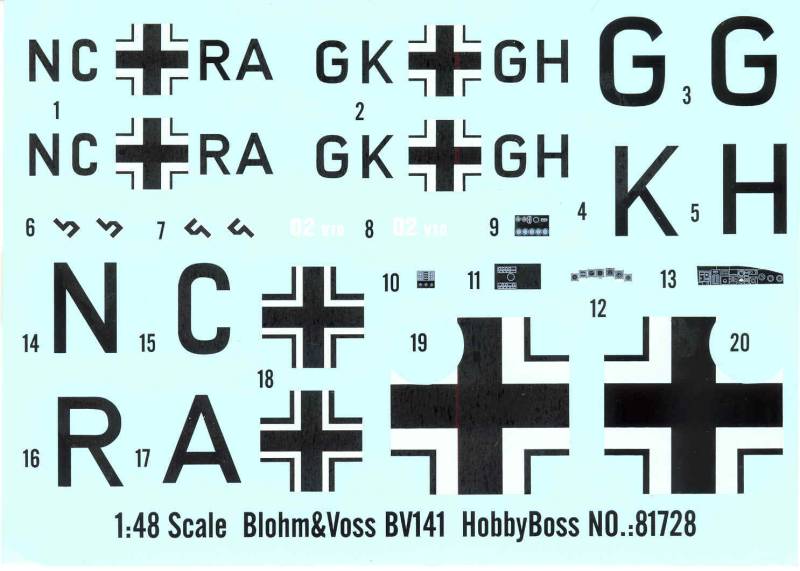
The instructions are in an A4 format a stapled booklet consisting of eight pages. Page one has the usual safety warnings, icon chart and decaling methods in English and Chinese, page two has a parts map, pages three through eight are the assembly diagrams divided into nine steps. There is an additional sheet A4 in size printed in color on glossy stock with the painting and decal instructions. Paint colors are called out for Mr. Hobby and some but not all colors are called out with Vallejo, Tamiya and Humbrol color numbers.
After Market Goodies
True
Details came to the rescue with a replacement prop [48558]
Eduard has a
mask set [EX443] and has done several photo etch sets. I went
with the
Zoom set [FE699] which is fairly simple with colored instrument
panel,
side console and a couple other panels plus belts and harnesses
and
rudder pedals plus a few other items.
Conclusions
This kit was a bit of a surprise to me when I
saw a notice it was going to be produced. HobbyBoss, at least in 1/48
scale, has concentrated pretty much on standard aircraft types and had
not broken any new ground by delving into some of the more esoteric
types. I also had read mixed reviews on the quality of some of their
kits. So it was a pleasant surprise to find that for the most part they
did an excellent job on this one. I haven't done a trial fitting but it
certainly looks good in the box and it certainly will be an easier
build than the old Historic Plastic Models kit. Yes, they did get the
propeller wrong but that shouldn't be a game stopper and quite
honestly, if they weren't told I doubt that most folks would notice it.
I'm quite pleased with the kit myself and hope it sells well enough
that they will consider doing some other esoteric kits as well as they
have done this one.The only other
injection molded kit in 1/48 that has been released is the Historic
Plastic Models kit a review of which can be found here
and a very old Karo-As vacu form kit and a
description of it can be found here.
I give the kit
two thumbs up and it should be an easy enough build that most modelers
should have no problem.
Links to kit build or reviews
A build / review can be found here.
References
Blohm & Voss BV 141 by David Myhra
Updated 11/12/14